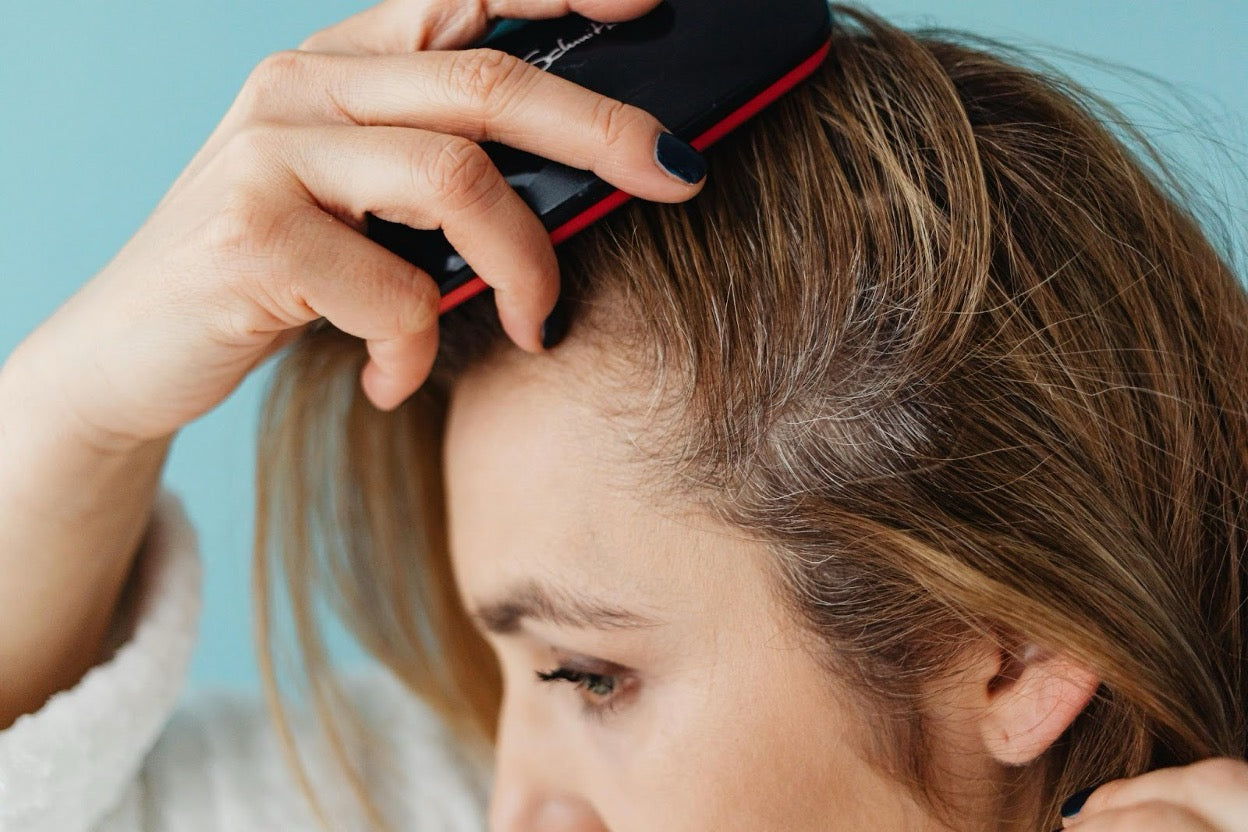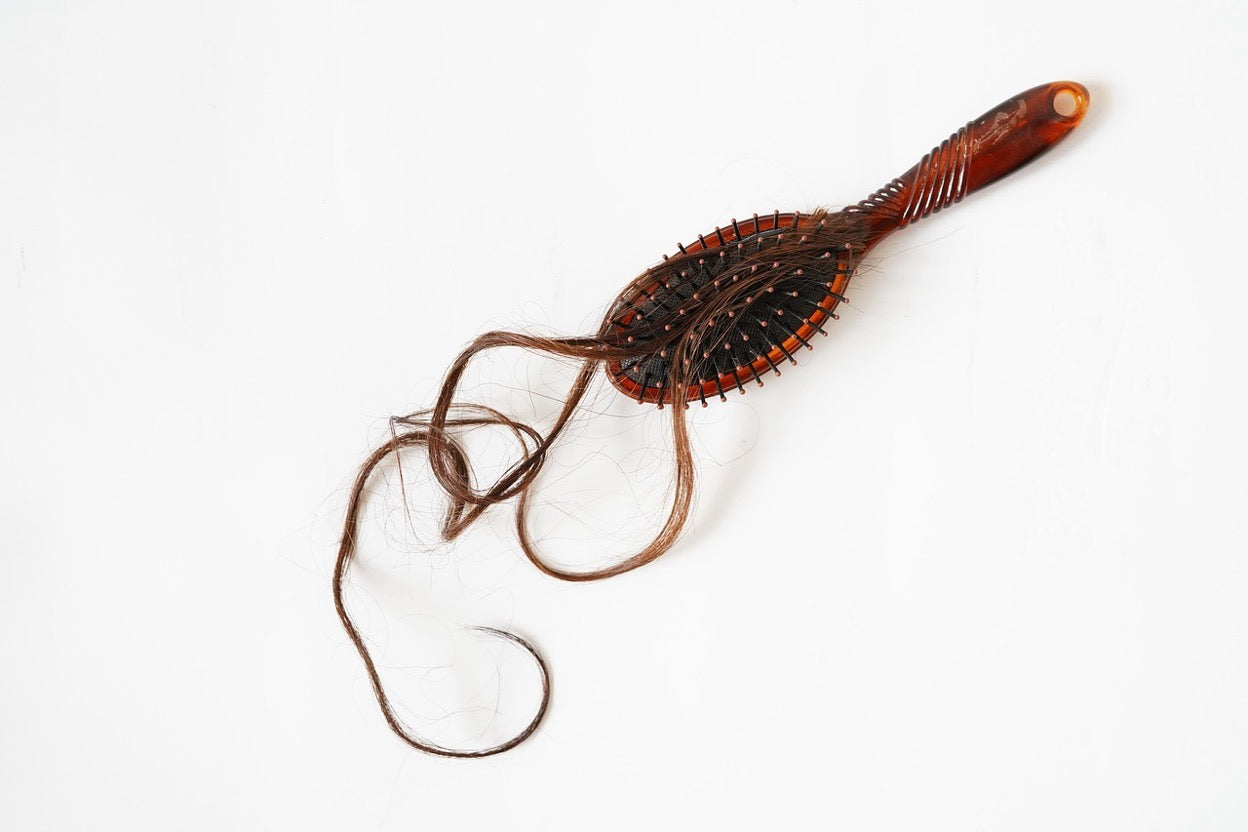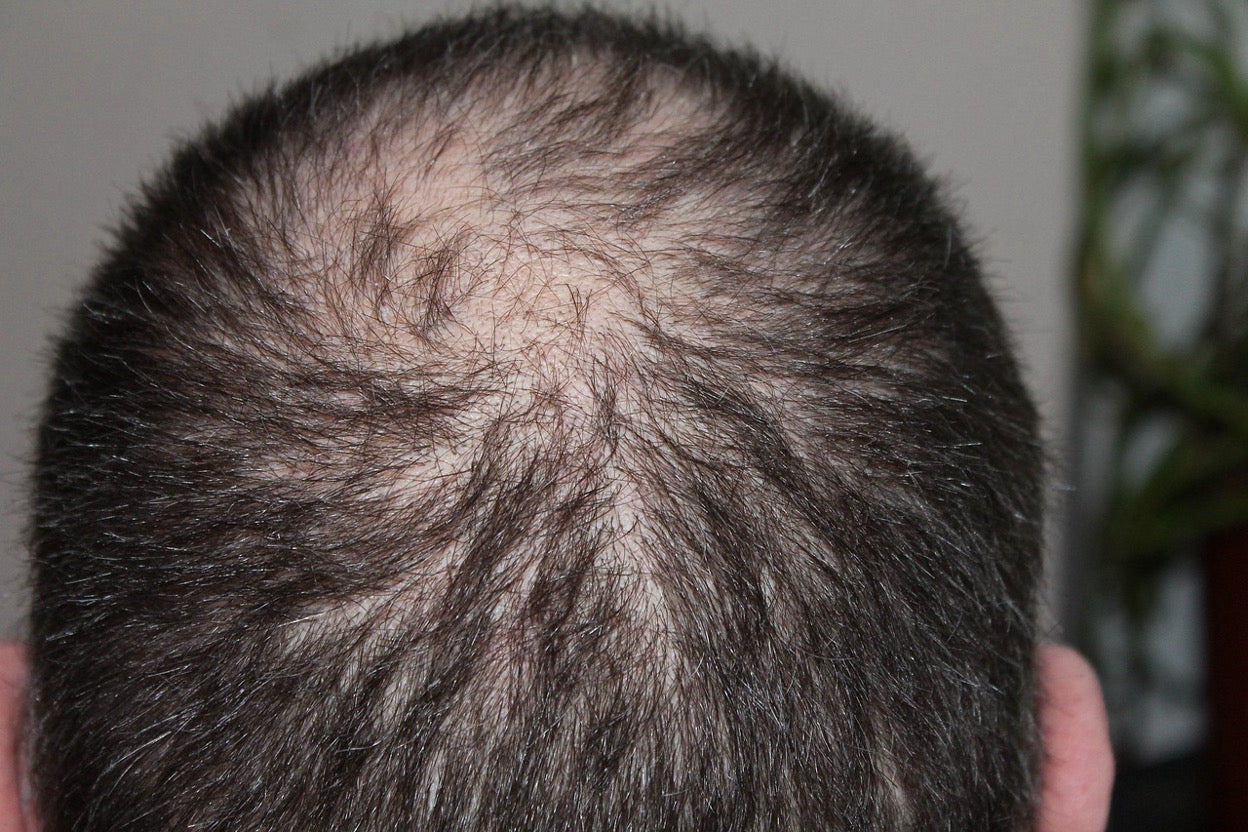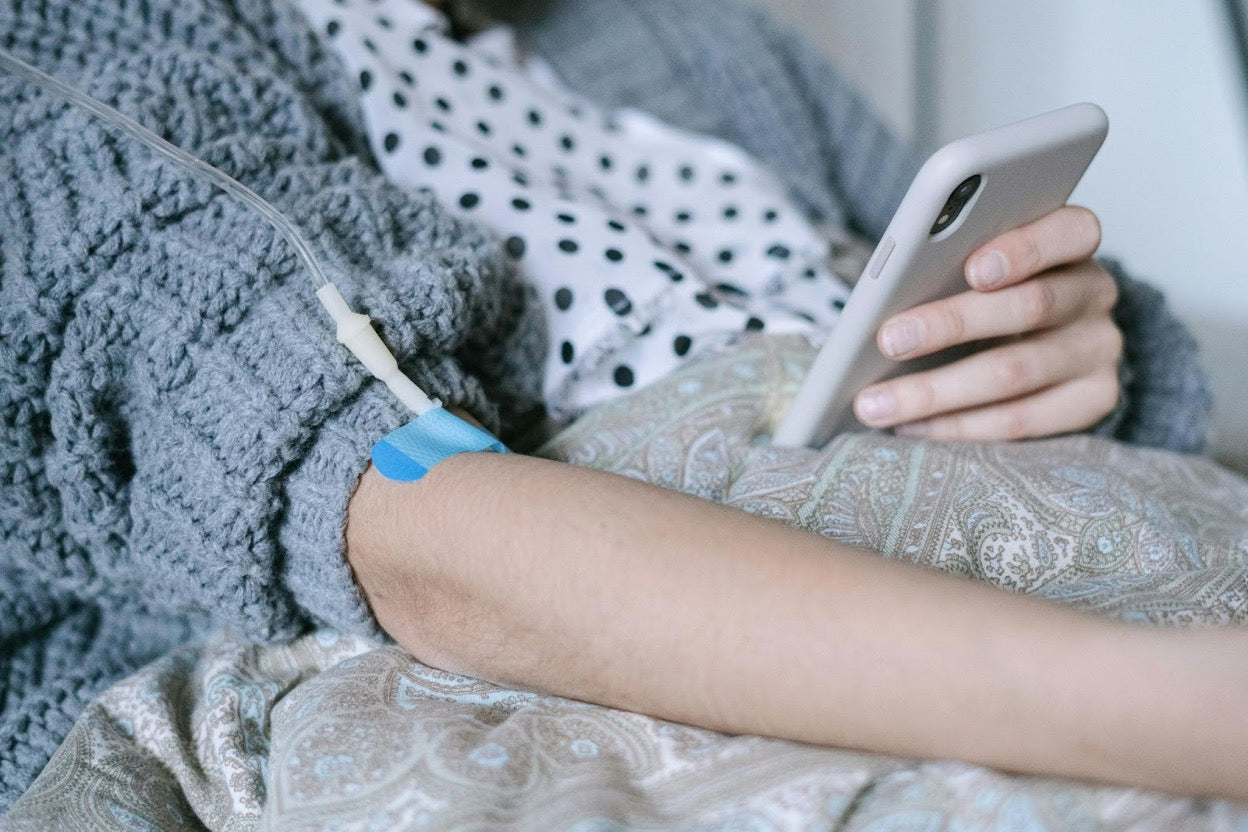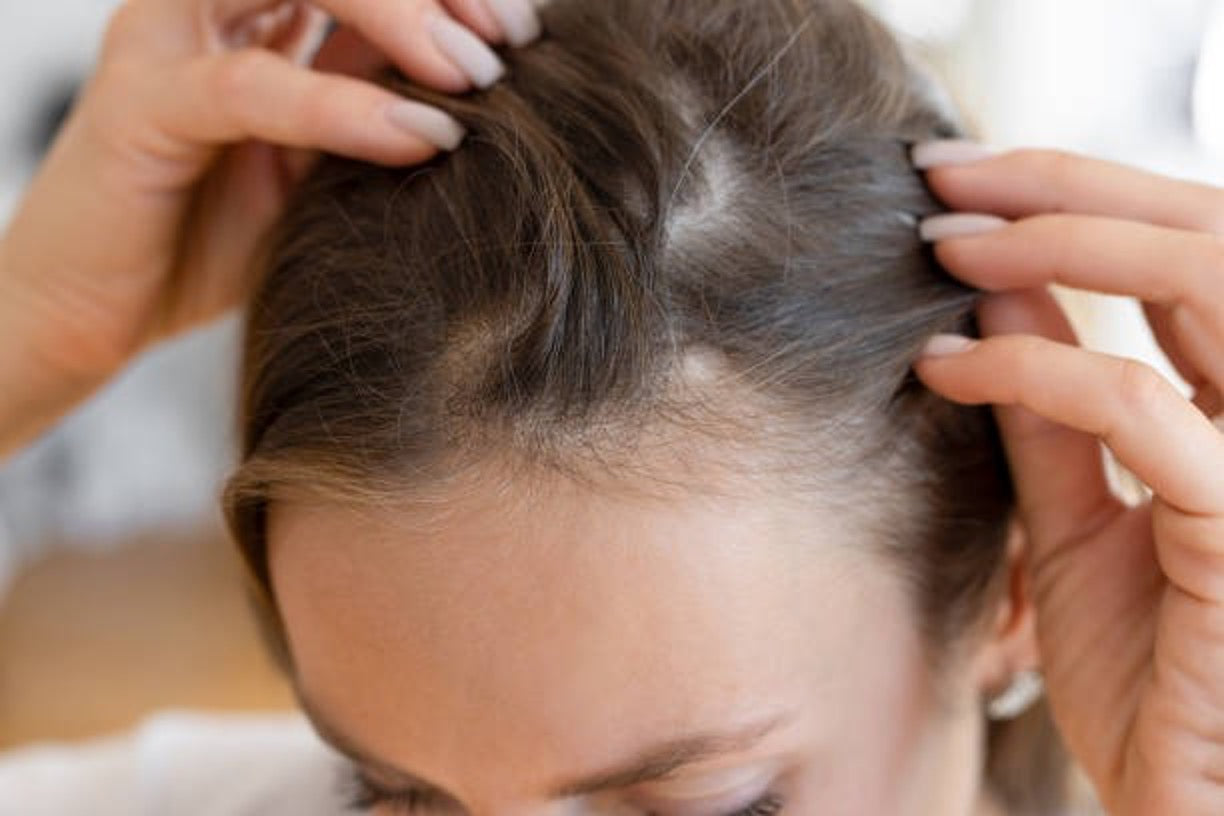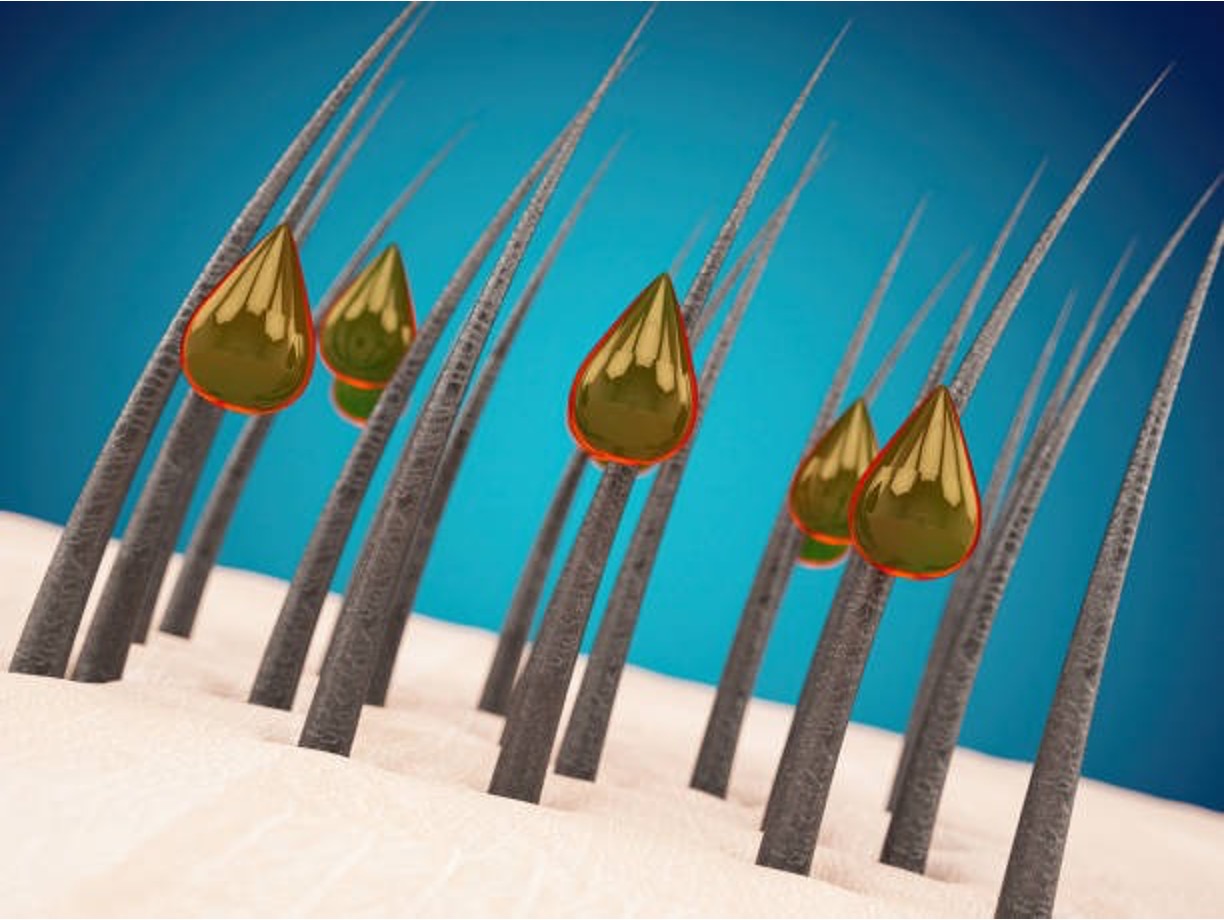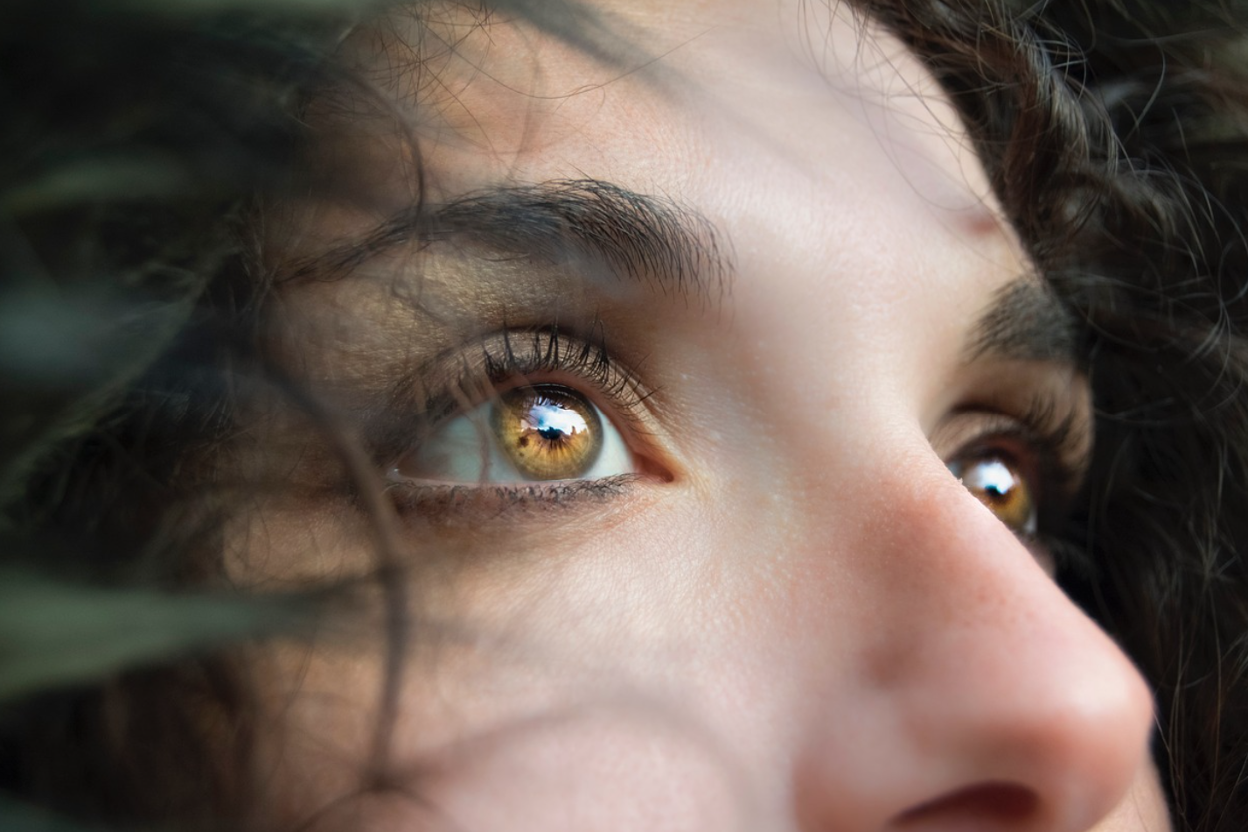Androgenic Alopecia vs PCOS Hair Loss: Differences, Treatments & Success Stories
BY TRYBELLO
Oct 30, 2025

Summary
- Androgenic alopecia and PCOS hair loss differ: the former is genetic, and the latter is a complex endocrine disorder.
- The patterns of hair loss are also different; androgenic alopecia follows predictable patterns, whereas PCOS hair loss often presents as overall thinning.
- PCOS-related hair loss is accompanied by other symptoms such as irregular periods, acne, and unwanted facial/body hair.
- The approaches to treatment vary significantly: PCOS requires addressing the underlying hormonal imbalance, while androgenic alopecia typically responds to topical treatments and DHT blockers.
- Trybello Hair Helper Spray provides support for both conditions with ingredients designed to stimulate hair follicles and improve scalp circulation.
Two Major Reasons for Hair Loss
Hair loss can be devastating, affecting both how you look and how you feel about yourself. Androgenic alopecia and polycystic ovary syndrome (PCOS) are two distinct and common causes of thinning hair.
While they may sometimes result in similar visual outcomes (e.g., thinning hair and reduced density), their underlying mechanisms, progression patterns, and treatment approaches differ substantially.
“Doctor-Approved Natural Spray Rapidly Boosts Growth & Thickness.
Why 100,000+ Women Are Switching to Trybello!"
Join over 100,000 happy customers who've transformed their hair with our doctor-formulated spray in just 12 weeks, rated 4.8/5 by 40,000+ real users.
Proven Natural Ingredients
- • Caffeine Extract – Blocks DHT and boosts blood flow to follicles
- • Biotin – Direct scalp absorption, no pills needed
- • Castor Oil – Soothes inflammation and locks in moisture
- • Rice Water Extract – Strengthens hair and reduces shedding
120-Day Growth Guarantee: No results? 100% money back, no questions asked.
Understanding Androgenic Alopecia
Androgenic alopecia, also referred to as male or female pattern baldness, is the most common type of hair loss that progressively gets worse over time.
It is estimated to affect around 50 million men and 30 million women in the U.S. The condition is marked by a slow decrease in the diameter, length, and color of hair, which eventually results in the production of miniaturized follicles that yield very thin, almost invisible hair strands.
This condition usually follows identifiable patterns, but varies between men and women. Although it's often thought of as a cosmetic issue, it can lead to a lower quality of life, lower self-esteem, and even depression or anxiety.
Genetic Factors & DHT
The primary culprit in androgenic alopecia is dihydrotestosterone (DHT), a hormone derived from testosterone through the action of an enzyme called 5-alpha reductase.
In genetically susceptible individuals, DHT binds to receptors in hair follicles, triggering a process that gradually shrinks them. This miniaturization process shortens the growth (anagen) phase of the hair cycle while lengthening the resting (telogen) phase, resulting in progressively finer, shorter hairs until the follicle stops producing hair altogether.
Patterns in Men vs Women
For men, androgenic alopecia often starts with the hairline receding at the temples, creating an "M" shape. This is usually followed by the hair thinning at the crown. Over time, these two areas may join together, leaving only a horseshoe-shaped pattern of hair around the sides and back of the head.
The pattern of hair loss in women is noticeably different. Female pattern hair loss typically shows up as thinning hair over the crown of the head, but the hairline in the front is usually preserved. This difference is crucial when making a correct diagnosis, especially when trying to distinguish female pattern baldness from other causes such as PCOS.
When Does it Start?
Androgenic alopecia usually starts after puberty when androgen levels increase. It's most noticeable in men in their 20s or 30s and in women after menopause. The progression is usually slow and steady, taking place over decades rather than months.
Women usually start to see visible thinning later, often in their 40s or 50s, but it can start sooner. By the time they're 50, about 50% of men and 25% of women have some degree of androgenic alopecia.

Both men and women may experience alopecia, but often at different ages and at different rates.
Understanding PCOS
Polycystic Ovary Syndrome, or PCOS, is a complex hormonal disorder that affects 6–13% of women of reproductive age around the world. While it's commonly associated with fertility problems, PCOS is actually a multisystemic condition with implications for metabolism, reproduction, and mental health.
The syndrome is defined by a combination of symptoms such as irregular menstrual cycles, high androgen levels, and polycystic ovaries, but not all symptoms need to be present for a diagnosis.
Hormonal Imbalance
PCOS is characterized by a hormonal imbalance, specifically an overproduction of androgens, or male hormones. The majority of these hormones are produced in the ovaries, with a smaller amount coming from the adrenal glands.
This hormonal imbalance can interfere with the menstrual cycle, often resulting in infrequent periods or a complete absence of periods as ovulation becomes irregular or stops entirely.
How PCOS is Diagnosed
For a diagnosis of PCOS to be made, you must meet at least two out of three criteria established by the Rotterdam consensus, namely infrequent or absence of periods, clinical or biochemical hyperandrogenism (i.e., high levels of androgen), and polycystic ovaries on ultrasound.
Diagnosing PCOS often involves ruling out other conditions that can cause similar symptoms, such as thyroid disease, high levels of the hormone prolactin, and congenital adrenal hyperplasia.
The Role of Insulin
Insulin resistance is a key player in PCOS, affecting between 65–95% of women with the condition, alongside high insulin levels. When the body's cells become resistant to insulin, the pancreas tries to compensate by producing more insulin, leading to a condition known as hyperinsulinemia.
This excess insulin then acts on the ovaries and adrenal glands, leading to an increase in androgen production.

PCOS-related hair loss usually includes thinning across the entire scalp.
Differences Between Androgenic Alopecia & PCOS
Both conditions can cause hair to thin due to the impact of androgens on hair follicles. However, androgenic alopecia is caused by a genetic sensitivity to normal hormone levels, while PCOS is caused by abnormally high hormone levels affecting genetically normal follicles. This key difference drastically changes the treatment approach required for each condition to successfully manage hair loss.
Hair Loss Patterns
Androgenic alopecia follows a specific pattern in both men and women. Men usually experience hair loss starting at the temples and the crown, leading to the typical horseshoe pattern. Women, on the other hand, usually keep their frontal hairline but experience thinning primarily at the crown and part line.
PCOS-induced hair loss usually manifests as a more generalized thinning across the whole scalp, though it can sometimes resemble female pattern hair loss. The main distinction is that hair loss from PCOS often comes with other symptoms such as irregular menstrual cycles, acne, and hirsutism.
When it Starts & Related Symptoms
Androgenic alopecia usually starts after puberty and becomes more common as you get older. Generally, this condition appears on its own, without other symptoms affecting the whole body.
PCOS typically appears during a woman's reproductive years, often showing up soon after the first menstrual period or in the early 20s. Unlike androgenic alopecia, PCOS is a syndrome with many symptoms in addition to hair loss, such as irregular or absent menstrual periods, problems with fertility, and weight gain.
Underlying Issues
The main difference between these conditions is where they come from. Androgenic alopecia comes from a genetic predisposition that makes hair follicles overly sensitive to normal levels of androgens in the blood. The problem is the follicles themselves, which react abnormally to hormone levels that wouldn't cause problems in people without this genetic predisposition.
Meanwhile, PCOS is an endocrine disorder where the main issue is an unusually high production of androgens, often coupled with resistance to insulin. The hair follicles are not necessarily more sensitive than normal, but are just exposed to higher levels of androgens than they can handle.
Treatment Options
Medication for PCOS & Androgenic Alopecia
For PCOS, some oral contraceptives can lower the production of androgen in the ovaries and ultimately decrease the levels of free testosterone. These hormonal treatments often lead to noticeable improvements in hair density within 6 to 12 months. Some medications that block androgen receptors may also be effective in reducing hair loss related to PCOS.
For androgenic alopecia, minoxidil is a common topical treatment for androgenic alopecia for both men and women. Other medications might also be suitable. Always consult with your healthcare provider to determine if and which medications are best for you.
What You Eat Matters
Eating the right foods and taking the right supplements can help manage both conditions. Foods that are low in sugar and high in omega-3 fatty acids and antioxidants can help reduce inflammation, which can make hair follicles smaller. Additionally, vitamin D, iron, zinc, and biotin, are all necessary for healthy hair growth. If you're not getting enough of these nutrients, you should work with your doctor to correct these deficiencies.

Look for foods with vitamin D, iron, zinc, and biotin if you’re looking to combat hair loss.
Androgenic Alopecia vs PCOS: Comparison Table
| Characteristic | Androgenic Alopecia | PCOS Hair Loss |
|---|---|---|
| Main Cause | Genetic sensitivity to normal levels of androgens | Increased androgen levels due to endocrine disorder |
| Pattern of Hair Loss | Men: M-shaped recession, thinning at the crown Women: Diffuse thinning with hairline preserved | Usually diffuse, may follow female pattern or exhibit variable patterns |
| Other Symptoms | Typically none; hair loss is isolated | Irregular periods, acne, hirsutism, weight gain, insulin resistance |
| Typical Onset Age | Men: Often in their 20s–30s Women: Usually after menopause | Usually during reproductive years (teens through 30s) |
| First-choice Treatments | Minoxidil, topical solutions | Hormonal regulation, anti-androgens, insulin sensitizers |
| Outcome with Treatment | Possible stabilization and partial regrowth | Often significant improvement with normalization of hormones |
Regain Your Hair & Self-Esteem with Trybello

Trybello Hair Helper Spray’s blend of biotin, caffeine, rice water extract, and castor oil help address hair loss at the source.
At Trybello, we know that hair loss does more than change your looks; it affects your self-esteem and how you interact with the world every day. That's why we've created Trybello Hair Helper Spray to combat hair thinning at its source, delivering real results for individuals dealing with different types of hair loss.
Our unique formulation contains biotin to strengthen hair follicles, caffeine to stimulate scalp circulation and extend the hair growth phase, rice water to reduce shedding, and castor oil to deliver all the essential nutrients right to your follicles. Plus, it’s vegan, cruelty-free, and doesn’t come with sulfates, parabens, or artificial fragrances.
We’re a US-based company and back our products with a 120-Day Growth Guarantee. Getting healthier hair shouldn’t be a financial risk. If you don’t see improvements within 120 days, we’ll refund your purchase.
Frequently Asked Questions (FAQs)
Trending Topics
See our latests posts #TRYBELLO


